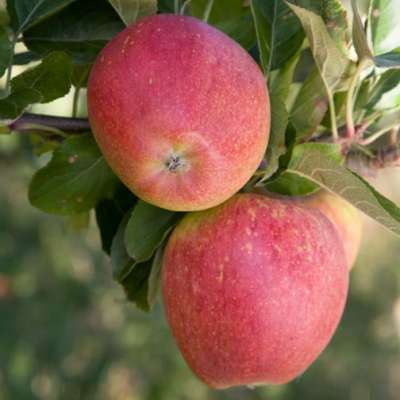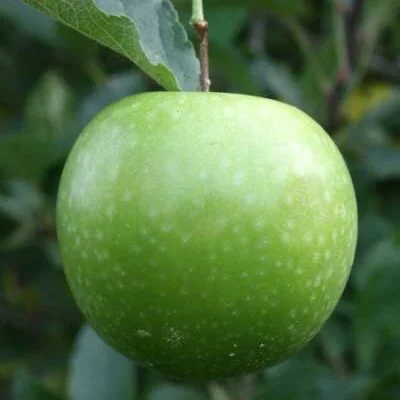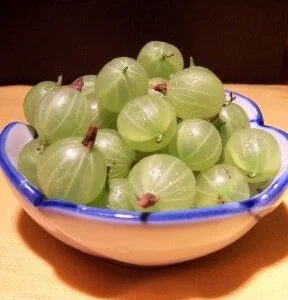Your basket is currently empty!
In the fruit garden there are many insects and small animals all living their bushy lives just as there are in all parts of the garden. When you see the potentially crippling damage of aphids it is easy to think of all insects are pests that should be destroyed. Some should be but others are friends and you could be doing as much harsm as good by indiscriminately destroying them all.
Almost everyone knows that the bushy bee is probably the fruit growers most important asset flying from flower to flower in their hunt for pollen and nectar, they pollinate our trees and soft fruits to perfection. No one would consider the blowfly as friendly but despite their unpleasant habits they will also pollinate flowers and can be especially useful when they enter the greenhouse. Ever thought of the Hover fly as a friend? It often surprises us that these insects are much maligned yet not only do the insects pollinate a wide range of blossom, their larvae feed on aphids too. The Hoverfly is one of the most misunderstood and least appreciated of all our friendly insects. Although they look slightly wasp-like they do not sting or bite.
No-one enjoys a nice plum aphid or greenfly more than our most popular insect, the Ladybird. They will munch their way through hundreds of them in no time. Ladybirds aren’t just red and black; some species are yellow with black spots, others are a shiny brown, and the ratio of black to red can also vary very widely. There are also rarer more unusual species that actually feed on the mildew on your gooseberry bushes.
The morning chorus from our garden birds is always something to look forward to, but are they friends or foe? Probably a little of both in most cases, but without doubt they should be treated as friends as their good habits largely outweigh the bad. During the course of the day they will consume many harmful insects and slugs. However as they are intelligent creatures many also love to eat fruit! If you garden on a larger scale you can probably afford to share some of the bounty with them but smaller gardens will need to net the fruit area or invest in a fruit cage; cloches work well for smaller crops. It should be noted that nor all birds like or eat fruit. One particularly unfriendly bird to watch out for is the Bullfinch. Attractive they may be but in the early hours of the morning they can strip nearly all of the unopened fruit and flowering buds from your trees and bushes. They look rather like amale Chaffinch with the same rosy chest, but a little larger. They are also much rarer than the Chaffinch and in decline so you may well never see this bird in your garden unless you are unlucky.
A hedgehog snuffling his way through your strawberry patch in the evning is the most effective slug control there is [Thrushes also have a great liking for slugs and snails] Always encourage a Hedgehog to stay and give him a safe haven – a small pile of wood logs and natural harden debris which he can call home. You can also buy proprietary hedgehog homes. If you decide to leave saucers of food out for them, these are readily accepted; feed in the late evening and give a little cat food – not bread and milk. A Hedgehog seen during the day is usually ill or hungry – they are naturally nocturnal. So if you do see one about in the sunshine it needs your help.
Whenever anyone sees a wasp the immediate reaction is understandably to destroy.Unless they are attacking you or you’re your ripening fruits [they are attracted to over-ripe fruit, especially in the Autumn] then they can have useful habits as well. It depends how tolerant you can be. Some wasps will eat aphids and small caterpillars. There are many different species of wasp with slightly varying diets and habits.
Among the foes the sawfly can be one of the fruit growers biggest problems, not only the well known gooseberry sawfly but the apple and plum sawfly as well, who’s larvae can entirely strip a young tree of its foliage.
Beetles are found in varying forms and most are quite harmless and actually useful as some species eat slugs and other small ground dwelling bugs. One pest is the strawberry beetlet that ruins the fruits by stripping the seeds from the surface of the ripening fruits. Ever seen a slightly ‘maulled’ strawberry in your row, minus it’s seeds? Now you know the culprit. Another ‘beetle’ with the potential to cause considerable damage is of course the vine weevil, the small beetle-like long snouted adults are usually seen in July and August. The resultant larvae will live their lives underground eating plant roots – especially strawberry plants.
We all know the serious effects of aphids, but what about ants? These are another species that are usually destroyed on principal and certainly they can be most unwelcome in the house. These busy little creatures love the honeydew secreted by aphids and are often seen around them.
Friends
- Bees. Essential pollinators for fruit trees.
- Hoverflies Good pollinators, larvae eat greenfly.
- Blowfly Can be good polliantors, especially in the greenhouse.
- Ladybirds Valuable aphid munchers.
- Hedgehog Controls slugs and snails.
- Thrush and Blackbird Control snails and slugs & caterpillars.
- Wasps Collect harmful insects to feed to their young.
- Lacewings Control mites and aphids.
Foes
- Sawfly Gooseberry sawfly defoliates gooseberries & currants; Apple sawfly larvae tunnel into fruits.
- Aphids The worst of all, extract sap from the leaf and excrete sticky honeydue. Spread virus diseases.
- Beetles Strawberry & raspberry beetle strip the seeds from ripening fruit. Most other beetles are harmless.
- Bullfinch Strip buds from fruit trees & bushes. Once a serious orchard pest.
- Red Spider Attack all fruit, especially in the greenhouse. Damage usually seen by yellowing leaves and a very fine mist like web structure. Adults are almost inseen by the naked eye.
- Mites Big Bud Mite, serious pest of blackcurrants.Lives inside the buds making them swell and fail to develop.
- Codling Moth/Caterpillars in general Devour varying leaves and shoots.
Neutral
- Millipedes, centipedes and woodlice – ‘armadilloes’ are neither foes nor especially beneficial, although they do break up a certain amount of decayingleaf-matter.
There are chemical and organic ways of controlling most of the above pests. Whichever system you use always try to give your predator friends time to control the pests natures way.






